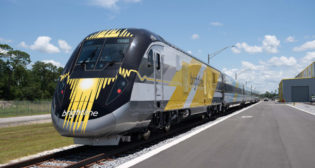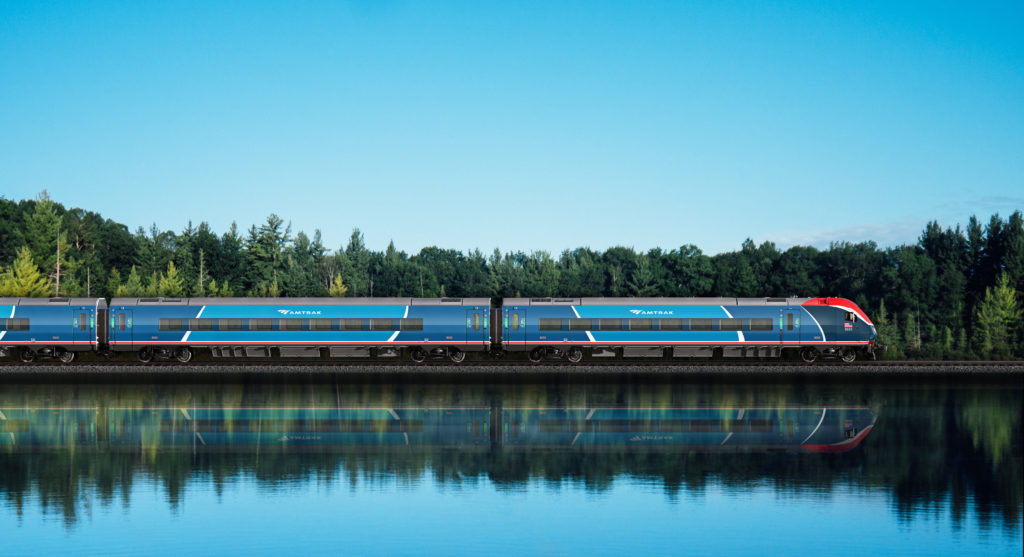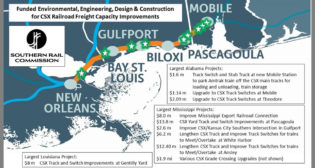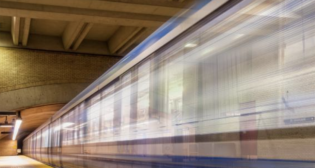
Amtrak’s National Identity Perpetually Complicated
Written by David Nahass, Financial Editor
Image Courtesy of Amtrak
FINANCIAL EDGE, RAILWAY AGE, NOVEMBER 2023 ISSUE: This month’s “Financial Edge” almost did not make it into the November issue of Railway Age. Why? Overindulgence was the reason for the delay. Halloween? Harvest Celebration? The reason was more urbane, and the scene was at Newark Penn Station.
If you’ve ever been to Newark Penn, you might wonder about the attraction. Shade your disbelief for a moment. Recently, Amtrak announced a groundbreaking plan to increase (actually double) ridership by 2040. Teleportation? Bullet Train? Au contraire! As reported in The Wall Street Journal (“Flush with Cash, Amtrak Embarks on Ambitious Makeover”), Amtrak has bigger plans.
Amtrak plans to spend its portion of the $1 trillion 2021 infrastructure bill to upgrade major urban train stations (think Baltimore, Washington, D.C., Chicago), and may be able to access up to $73 billion (not a typo) from the $1 trillion. Amtrak will encourage more interesting retail and food options (sorry Dunkin’ Donuts), encourage residential development in the area and make the stations a more socially positive and attractive community hub. This will draw in more affluent residents who will, since the train station happens to be right next door, decide that jumping on the 4:00 train to wherever is the kind of spontaneity needed to drive ridership to targeted levels.
You can unshade your disbelief.
Metropolitan train stations were grand halls that showcased the American vision for progress and urban development. They were late 19th or early 20th century projects (Pennsylvania Station New York, 1910; Penn Station Baltimore, 1911; St. Louis Union Station, 1894; Denver Union Station, 1881; Chicago Union Station, 1925; Penn Station Newark, 1935) that predated (mostly—sorry Newark) the onset of commercial aviation.
Today, many active train stations are out-of-place hubs of limited use, often in shady areas of towns where they operate. Why? It would seem obvious. Stations attract people in large numbers. They are dirty and loud, high-traffic areas. People don’t live near train stations for the same reason they don’t live near the airport or a Walmart.
Amtrak has imagined a different reality. Take the Amtrak plan to rejuvenate the Baltimore Penn area as a residential hub, a kind of bedroom community for Washington, D.C., commuters. The renderings of the redesign/rebuild of the Baltimore station are extraordinary, as is the $150 million price tag. Equally outlandish is construction of a new multi-use building for a city where office vacancy is 20%. The plan seems far-reaching.
Amtrak is a ward of the federal government lost in decades of bildungsroman narratives—a mobius strip of movies like The Breakfast Club, St. Elmo’s Fire and Reality Bites.
(A bildungsroman, according to Wikipedia, is “a growing up or ‘coming of age’ of a generally naive person who goes in search of answers to life’s questions with the expectation that these will result in gaining experience of the world. The genre evolved from folklore tales of a dunce or youngest child going out in the world to seek their fortune. Usually in the beginning of the story, there is an emotional loss which makes the protagonist leave on their journey. In a bildungsroman, the goal is maturity, and the protagonist achieves it gradually and with difficulty. The genre often features a main conflict between the main character and society. Typically, the values of society are gradually accepted by the protagonist and they are ultimately accepted into society—the protagonist’s mistakes and disappointments are over.”)
Amtrak cannot survive without federal support. Amtrak is and will likely always be subsidized like the European system to which it is often and unfairly compared. It would likely benefit from focusing on maximizing its supported national passenger service role rather than making repeated attempts to turn operationally profitable. (Please spare the legend of the “profitable” Northeast Corridor.) Amtrak suffers from two fatal flaws. One, the country is just too damn big. Two, Amtrak struggles to deliver consistent on-time service possibly because it doesn’t own its own track, and cannot “buy” (or be assigned) slots to timely move passengers like its European counterparts.
Who could imagine a railroad that does not deliver consistent on-time service? Yes, the Class I’s don’t prioritize Amtrak service. (Remember, Amtrak began when the Class I’s shed their passenger business.) Amtrak service issues are the symptom rather than the cause.
On a really good 1970s day and under the best of circumstances, perhaps Amtrak could have built its own rail lines. Now, it will never happen. Amtrak is stuck with the same system that was in place on the day of its birthing. Problem two is just the same as problem number one. The country is too damn big.
If Amtrak had its own track, it theoretically could run five trains per day, on time (again this is a railroad), from, say, New Orleans to Phoenix. Dedicated track for those five trains is overkill, no? Amtrak, with its own lines, would likely petition the STB to move freight on its underutilized track (wouldn’t be the first or even second time). Perhaps on its own track that route could be profitable and therefore the balance sheet could break even or even be cash-flow-positive.
As Hemmingway closes The Sun Also Rises, “Yes, isn’t it pretty to think so?”

Apologies to Amtrak management for this harshness. Amtrak should accept its identity and stop wasting (more) money by advocating the Railroad of Dreams (“build it and they will ride”). Amtrak’s national identity is and will remain complicated. There are certain local commuter-oriented situations where investment in stations and the surrounding areas (e.g., Montclair and Red Bank, N.J.) are functional and provide quality of life improvements. Amtrak should leave that to local municipalities and their budgets.
If the situation seems too complex, there’s always the bar car!
Got questions? Set them free at [email protected].



